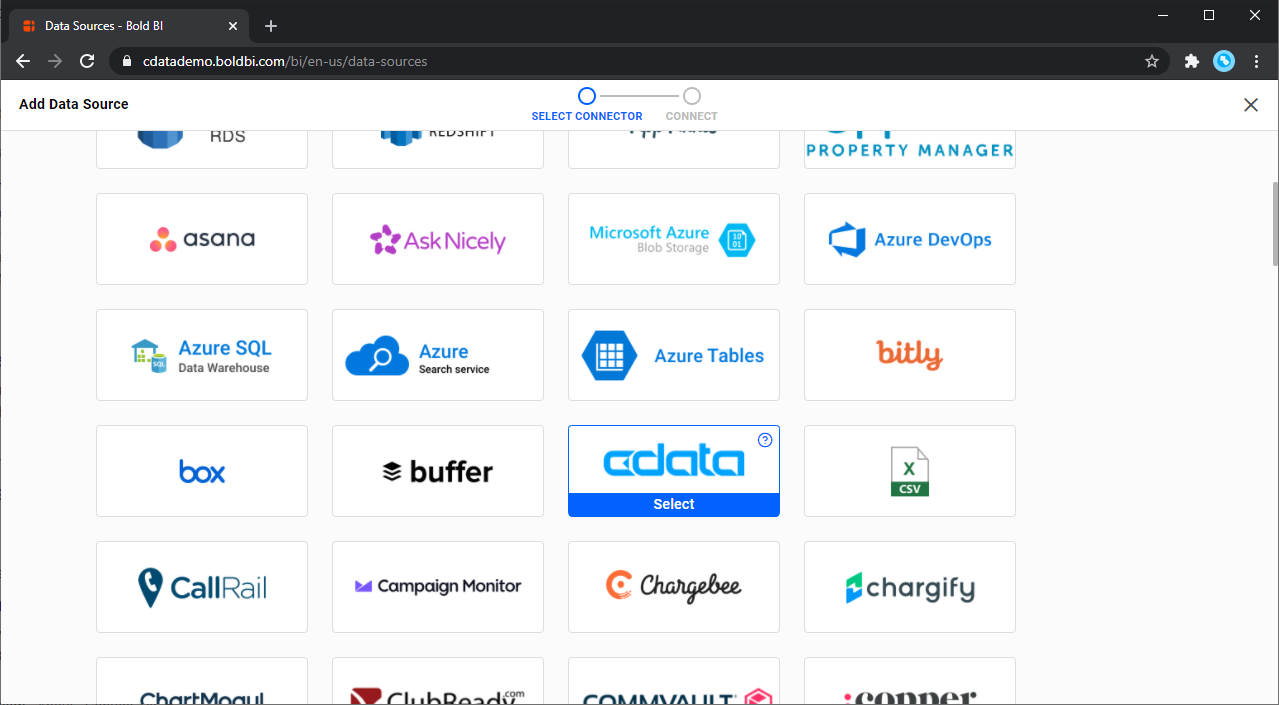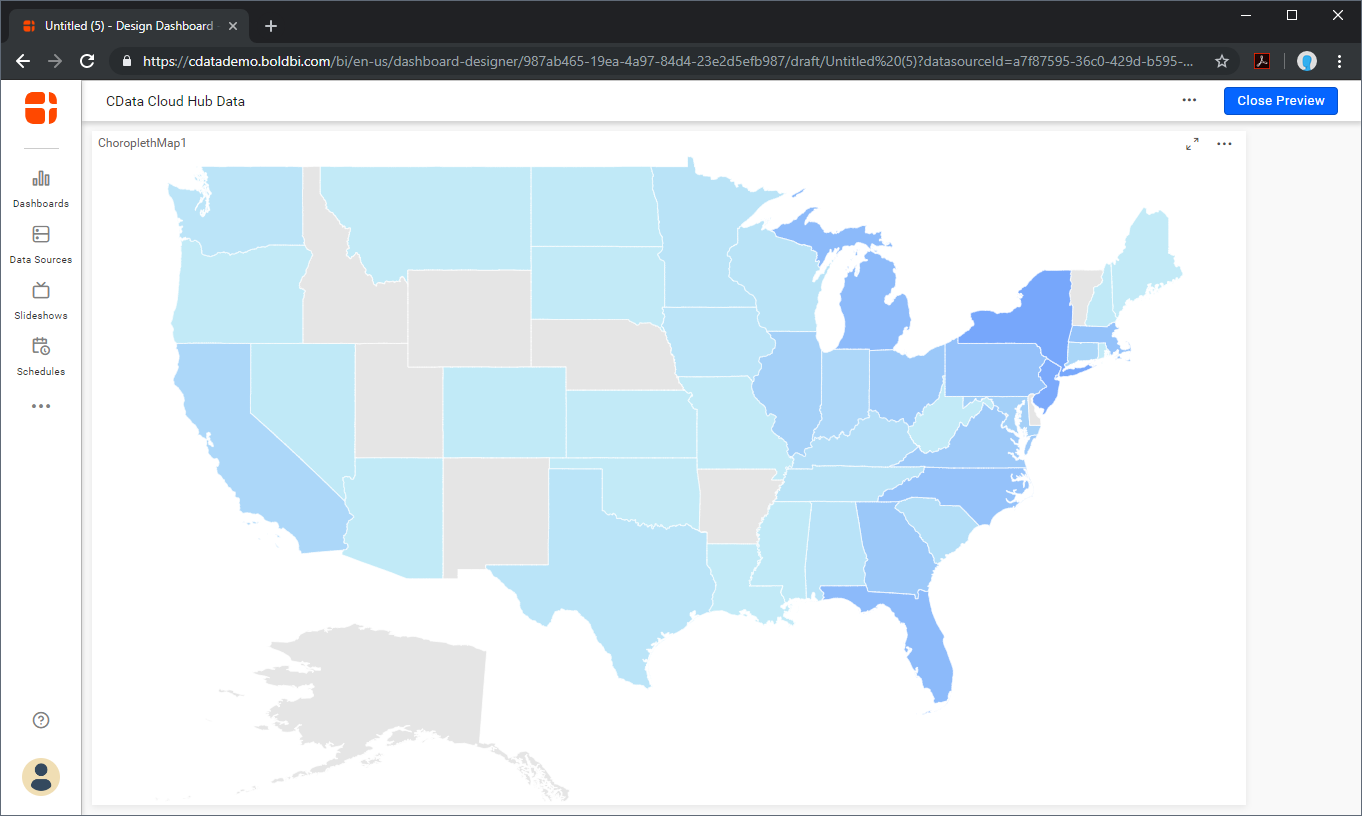Discover how a bimodal integration strategy can address the major data management challenges facing your organization today.
Get the Report →Create FTP Dashboards in Bold BI
Use CData Connect Server to create a virtual SQL Server Database for FTP data to build custom dashboards in Bold BI.
Bold BI allows you to create, share, and collaborate on interactive BI dashboards. When paired with CData Connect Server, you get instant access to FTP data for visualizations, dashboards, and more. This article shows how to create a virtual database for FTP and build reports from FTP data in Bold BI.
CData Connect Server provides a pure SQL Server interface for FTP, allowing you to easily build reports from live FTP data in Bold BI — without replicating the data to a natively supported database. As you build visualizations, Bold BI generates SQL queries to gather data. Using optimized data processing out of the box, CData Connect Server pushes all supported SQL operations (filters, JOINs, etc) directly to FTP, leveraging server-side processing to quickly return the requested FTP data.
Create a Virtual SQL Server Database for FTP Data
CData Connect Server uses a straightforward, point-and-click interface to connect to data sources and generate APIs.
- Login to Connect Server and click Connections.
![Adding a connection]()
- Select "FTP" from Available Data Sources.
-
Enter the necessary authentication properties to connect to FTP.
To connect to FTP or SFTP servers, specify at least RemoteHost and FileProtocol. Specify the port with RemotePort.
Set User and Password to perform Basic authentication. Set SSHAuthMode to use SSH authentication. See the Getting Started section of the data provider help documentation for more information on authenticating via SSH.
Set SSLMode and SSLServerCert to secure connections with SSL.
The data provider lists the tables based on the available folders in your FTP server. Set the following connection properties to control the relational view of the file system:
- RemotePath: Set this to the current working directory.
- TableDepth: Set this to control the depth of folders to list as views.
- FileRetrievalDepth: Set this to retrieve and list files recursively from the root table.
Stored Procedures are available to download files, upload files, and send protocol commands. See the Data Model chapter of the FTP data provider documentation for more information.
![Configuring a connection (SQL Server is shown).]()
- Click Save Changes
- Click Privileges -> Add and add the new user (or an existing user) with the appropriate permissions.
With the virtual database created, you are ready to connect to FTP data from Bold BI.
Visualize Live FTP Data in Bold BI
The steps below outline connecting to CData Connect Server from Bold BI to create a new FTP data source and build a simple visualization from the data.
- Log into your Bold BI instance, click the data sources tab, create a new data source, and choose the SQL Server connector.
- Choose the basic configuration and set the connection properties:
- Name: Name your connection
- Server name: Your Connect Server instance (CONNECT_SERVER_URL)
- Port: 1433
- Username: Your Connect Server username
- Password: Your Connect Server password
- Mode: Choose Live to query FTP on-demand or choose Extract to load the data into Bold BI
- Database: Choose the database you created from the drop-down menu (ftpdb)
- Click Connect
- Select the table to visualize and drag it onto the workspace.
- Select a visualization style and add it to the report.
- Click the gear icon for the visualization to configure the visualization properties and assign columns to the visualization.





SQL Access to FTP Data from Applications
Now you have a direct connection to live FTP data from your Bold BI workbook. You can create more data sources and new visualizations, build reports, and more — all without replicating FTP data.

To get SQL data access to 200+ SaaS, Big Data, and NoSQL sources directly from your applications, see the CData Connect page.







